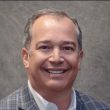Fantasy is one thing, reality quite another

Earlier this month, attendees of the National Emergency Number Association’s annual conference in Indianapolis were treated to a skit presented by drama students from nearby Butler University. The students portrayed 911 telecommunicators working in a public-safety answering point circa 2025. The script was along of the lines of public safety meets the Jetsons.
The actors portrayed numerous futuristic capabilities. Instead of looking at computer screens, they “wore” special goggles that displayed all of the vital information they needed to perform effectively, similar to the types of goggles that military fighter pilots use today. They were able to receive vital signs from patients at an accident who had implanted medical sensors; they were able to send video demonstrating the Heimlich maneuver to a 911 caller trying to help a choking victim; they were able to trigger a dose of insulin, through a “wireless band-aid,” to a diabetic who was acutely hyperglycemic.
Indeed, there was much discussion during the conference about all of the advanced capabilities that will be available to those working in the 911 sector once broadband arrives. Much nearer term, video conferences will occur between emergency medical technicians and emergency room doctors; large files — such as X-rays — that would choke today’s systems will be transmitted to wherever they’re needed, whenever they’re needed; PSAPs will receive crash data directly from vehicle-telematics systems; emergency calls will be rerouted when a PSAP is knocked off line; vital data will be shared between PSAPs in real time.
One speaker described all of this as “life-changing technology.” It’s difficult to argue with that. But my fear is that we’ll see such capabilities right around the time we see flying cars. The reason, of course, is money. There’s not enough of it flowing into the 911 sector as it is. Indeed, some PSAPs are challenged to provide basic services right now, because tax revenues have plummeted in some areas and some states continue to raid 911 funds.
So, where’s the cash going to come from to buy all of the gear that will be needed to bring the broadband vision to fruition?
It’s a concern, said NENA CEO Brian Fontes. “You can’t plan for a migration to next-gen 911 when you have insufficient and fluctuating funding sources. It’s simply not going to work,” he said.
This reminds me of the early days of television. I wasn’t around then. But my parents used to tell me stories about having to go the local tavern to watch a sporting event on the tube, because the tavern owners were the only ones who could afford to buy a set. I worry that the same situation will play out regarding NG-911; that is, only PSAPs in large metropolitan areas will be able to leverage the technology.
There has to be a better way. But I doubt it will be found in the current funding model, which largely treats the 911 sector like the red-headed stepchild. Perhaps it’s time for a clean sheet of paper. I’ve thought so for quite a while.
My suggestion — which I am certain will make quite a few heads explode — would be to have the federal government take over the responsibility for funding public-safety communications, under the auspices of a newly created agency within the Department of Homeland Security.
I envision something along the lines of the Federal Highway Administration, which is a unit of the Department of Transportation. The FHA oversees construction and maintenance of interstate highways, U.S. highways and state highways. It doles out money to the states, which actually do the work. The money is generated by the federal gasoline tax.
In my plan, Congress would enact legislation to create the governing agency and to establish a tax on all Internet purchases — billions of dollars are spent by American consumers on line every year, so the tax wouldn’t have to be huge. I’d also replace the wireless 911 surcharge — which all too often gets pirated by the states — with a federal excise tax that would be applied to all Internet and wireless users — including prepaid wireless users. That way, the feds control the cash, not the states.
State and local governmental entities would apply for grants from this pool of money, and the federal agency would decide who gets the cash, based on merit. All public-safety communications would be covered by this plan, including the 911 sector. The state and local entities would have to come up with matching funds that would be generated by local taxes.
Here’s the best part of my plan: the money could only be spent on the approved project, and work would have to begin within a prescribed time period. If those conditions aren’t met, the state or local entity would have to pay the feds back — with interest. If they were unable to pay it back, then they would forfeit federal highway funds until the ledger was wiped clean.
During the NENA conference, I asked Evelyn Bailey, senior policy consultant at L.R. Kimball, what she thought about my idea. “It’s one that’s worth exploring. It would come down to historical turf issues, jurisdictional issues,” she said. “Radio traditionally has been one thing and 911 has been another thing. Radio has been funded from a different pot of money than 911. So there are institutional, economic and structural barriers that would need to be overcome in order to get to that vision.”
I’m not naïve. I suspect I’ll be able to swallow my dinner in the form of a pill before I see this plan come to fruition. But if those of the Jetsons era were allowed their fantasies, why can’t I have mine?
A note to our readers: Have a happy and safe Independence Day. And please join me in spending a few minutes thinking about all of those who made the ultimate sacrifice so that we can be a free and independent people.
What do you think? Tell us in the comment box below.

















